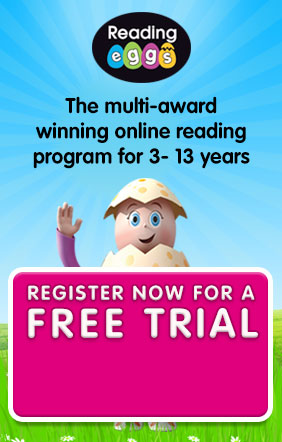
The brand new online platform offering free phonics resources, activities and games for parents, educators and children!
Teaching Notes
for Lessons 2, 4, 7
Soundcard Slideshow
The Soundcards are the first stage of each lesson. Your child should watch and listen to a single Soundcard slideshow for one phoneme before attempting the companion Worksheets. The slideshow firstly sounds out the phoneme (or sound) and then includes three examples of the sound’s usage: 1. At the beginning of the word (initial) 2. Within a word (medial) 3. At the end of a word (final)
Printable Download
Once your child has watched and listened to the slideshow, then you can download and print the soundcard PDF. The file is designed to be printed double-sided in color, with the words on the back of each image. This printout can be laminated and cut into four flashcards that you can use for practice and reinforcement of the lesson.
Practicing with flashcards
Here is a sample of appropriate dialogue to engage a child when using the flashcards.
(Note: This example uses the short vowel ‘a’ from Lesson 2)
1. Initial Sounds
Show the child the card with the letter 'a'.
Ask the child, "Do you know what letter this is?"
Wait for the child's response.After the child responds, praise them if they say ‘a’.
If they do not respond with ‘a’, then say, “This is ‘a’.”
Ask the child, "Do you know what sound this makes?"
Wait for the child's response.Note: There are several correct answers, but for this lesson the child should respond with ‘a’, pronounced as in the word ‘apple’. If the child does not respond with the correct phoneme sound, then tell them the answer: “This is ‘a’, as in ‘apple’."
Show the child the flashcard with the image of the ant.
Ask the child, "Do you know what this is a picture of?"
Wait for the child's response.The child may respond with the answer ‘bug’ or ‘insect’. If so, say, “Yes, you are correct, but this picture in particular is an ‘ant’.”
Ask the child, "Do you know what sound it starts with?"
Wait for the child's response.Note: There are several correct answers, but for this lesson the child should respond with ‘a’, pronounced as in the word ‘ant’. If the child does not respond with the correct phoneme sound, then tell them the answer: “This is ‘a’, as in ‘ant’.”
Ask the child, "Do you know any other words that begin with the same sound?
Wait for the child's response.Congratulate the child enthusiastically if they answer with other words using the correct phoneme sound. If the child does not answer correctly, say some for them, e.g. apple, avocado, avenue.
2. Medial Sounds
Show the child the card the flashcard with the image of the cat.
Ask the child, "Do you know what this is a picture of?"
Wait for the child's response.The child may respond with the answer ‘pussycat’ or ‘kitten’. If so, say, “Yes, you are correct, but this picture in particular is a ‘cat’.”
Ask the child, "What sound is in the middle of the word cat after 'c'?"
Note: 'c' should be pronounced as phoneme sound 'kah', not as in the letter 'see'.
Wait for the child's response.Note: There are several correct answers, but for this lesson the child should respond with ‘a’, pronounced as in the word ‘cat’. If the child does not respond with the correct phoneme sound, then tell them the answer: “This is ‘a’, as in ‘cat’.”
Ask the child, "Do you know any other words that have that sound in the middle?"
Congratulate the child enthusiastically if they answer with other words using the correct phoneme sound. If the child does not answer correctly, say some for them, e.g. mat, bat, fat.
3. Final Sounds
Show the child the flashcard with the image of the 'umbrella'.
Ask the child, "Do you know what this is a picture of?"
Wait for the child's response.Praise them when they respond with the correct answer 'umbrella'.
Ask the child, "What sound does it end with?"
Wait for the child's response.Note: There are several correct answers, but for this lesson the child should respond with ‘a’, pronounced as in the word ‘umbrella’. If the child does not respond with the correct phoneme sound, then tell them the answer: “This is ‘a’, as in ‘umbrella’
Ask the child, "Do you know any other words that end with the same sound?"
Congratulate the child enthusiastically if they answer with other words using the correct phoneme sound. If the child does not answer correctly, say some for them, e.g. banana, pizza, pasta.
Worksheets
There are three worksheets for each phoneme. The worksheets are designed to reinforce what has been learned from the soundcards and to extend that knowledge. The handwriting activities are for writing practice of the phoneme on its own and within words. Forming these letters is an important part of the teaching process and should always be completed before moving on to the next phoneme in the lesson.
eBooks
The eBooks are downloadable and can also be printed as PDF files if required. There is a range of eBooks available for each lesson with accompanying worksheets.
Common Core
The Phonics.com program has been developed to align with the Common Core K-5 Reading Standards Foundational Skills:
- Print Concepts
- Phonological Awareness
- Phonics & Word Recognition
- Fluency
The first release of Free resources, the Phonics Alphabet, covers the 42 phonemes that make up the English language. These are essential for reading fluency and are taught in the Common Core order.
Coming Soon
More resources will be added throughout the year. Register below to be one of the first to know!
